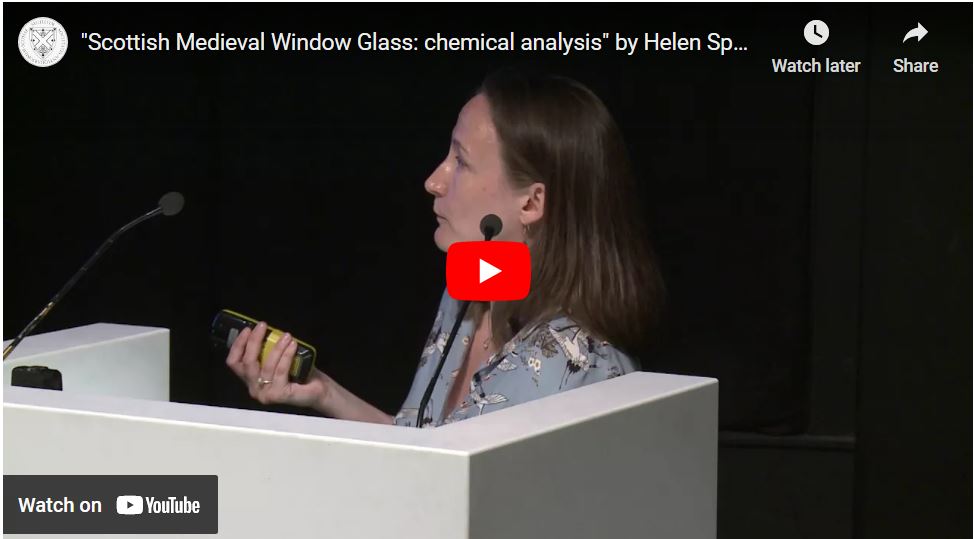Former Conservator and Collections Care manager at the National Museum of Scotland, Helen Spencer, is an archaeological scientist with a particular interest in stained glass (see Helen’s Talk on Mediaval window glass here). Helen first set the scene by explaining, in a very accessible way for non-scientists, glass industry through the ages. Glass is basically melted and solidified sand. However, sand has a melting temperature far greater than anything the only available source of heat in earlier historical times – wood or charcoal- can achieve. Glass making appears to have arisen in the Middle East around 2500 BC when it was discovered that mixing sand with naturally occurring alkaline salts of potassium (nitrum), or sodium (natron) gave a mixture that would melt at temperatures created by wood fires. The solidified product is glass. Other sources of the alkali components included wood ash, and other vegetation. The Egyptians were the first civilisation to make extensive use of glass. The technique was in due course adopted by the Greeks and Romans.
It was discovered very early in its history that various additives could produce glass of different colours. These additives could be minerals containing manganese, copper, iron and so forth, or even metal shavings of brass or bronze. Herein is the origin of the stained glass used for jewellery and windows. While nowadays we have a detailed understanding of the chemistry of glass and its components, historically this was not the case and much was achieved through trial and error, with the creation of ‘recipes’ for various qualities and colours of glass.
In Britain the original glass industry, post Roman occupation, was based on recycled glass obtained from various sources. The manufacture of glass from raw materials was a much later development in the Medieval period. However, for much of this period, recycling remained an important part of the glass industry. In East Lothian the basic raw materials were available in abundance: sand from the coast, seaweed as a source of alkaline salts, and coal as a better fuel than wood. The first records of glass manufacture here date from the later 17th century and continued into the mid-18th century. Morrison’s Haven near Prestongrange was one of several glass-making sites between Musselburgh and Port Seton. The process was carried out in tall cone -shaped kilns called Glass Cones, which, standing around 25 metres tall, would have been striking features of the coastal landscape.
Helen explained how chemical analysis of glass samples could determine the recipe used in its manufacture, and could even pin down the likely geographical origin of the raw materials. For example, the high strontium content of some East Lothian glasses is evidence for the use of seaweed as the alkaline component in these cases. She also gave some insights into how the finished products were made. These all involved glass blowing. In this way glass bottles were made and, for window glass, blown elongated tubes could be cut along one side and allowed to fold out flat, or flattened discs were made with rapid spinning of the blow pipe. Glass making and glass types were explored further following the talk, as Helen dealt confidently with the many questions posed by members of the audience.
Peter R
